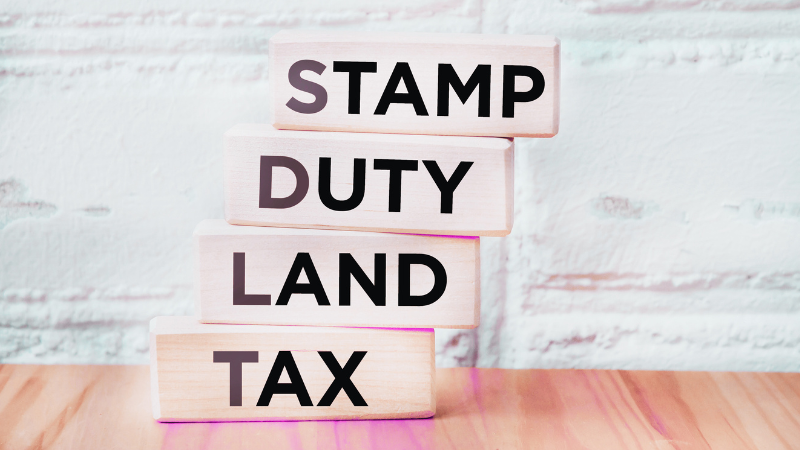In October 2017, the Prudential Regulation Authority (PRA) made some changes to the way lenders view borrowers who have four or more buy to let properties.
Part of the Bank of England, the PRA regulate around 1,500 banks, building societies, insurers, credit unions and investment firms.
Changes have been made to ensure that lenders only offer buy to let mortgages to landlords who can comfortably afford them. This means that in the future, you may need to provide your lender with additional information about your current income, outgoings, assets and liabilities when applying for a buy to let mortgage.
So, whether you’re a first-time landlord looking to grow your portfolio, or you’re a seasoned buy to let investor, now’s the time to familiarise yourself with the new rules and regulations.
What is a Portfolio Mortgage?
A portfolio mortgage is a type of mortgage offered to landlords with a portfolio of properties.
Portfolio mortgages are positioned in-between buy-to-let mortgages and commercial mortgages. They’re typically interest-only like normal buy-to-let mortgages because they’re still for buy-to-let properties.
What is a Portfolio Landlord?
If you own four or more mortgaged buy to let properties, lenders will class you as a portfolio landlord.
If you own less than four properties classified as a private landlord and only require a normal buy-to-let mortgages or limited company buy-to-let mortgages.
Always remember that lenders only take into account the number of properties you own. This means that if you have four or more rental properties, or if a new purchase will be your fourth one, mortgage lenders will still class you as a portfolio landlord.
What can a portfolio mortgage be used for?
Portfolio mortgages can be used to finance the following:
- Normal buy-to-let properties
- Limited company buy-to-lets – this would require a limited company portfolio mortgage
- Auction properties
- Student buy-to-lets
- Multiple flats under one freehold
- HMO (Houses in Multiple Occupation) – HMO mortgages are available as a standalone mortgage product if you don’t have a portfolio of 4 or properties
- Properties owned via a limited company.
- Consent to let properties.
- Holiday lets.
- All buy to let mortgages owned either solely or jointly.
How does a portfolio landlord mortgage work?
A landlord mortgage, portfolio mortgage or buy-to-let mortgage works identically to a regular mortgage, that means:
- It is interest-only.
- Secured on rental properties.
- On a one mortgage per property basis – not one mortgage for the entire portfolio.
This means that you will require a portfolio mortgage after you have acquired four properties and for every new property you acquire after the fourth.
What if you already have a buy-to-let mortgage?
If you have an existing buy-to-let mortgage, you have the option of remortgaging them onto a variety of portfolio products, however, this isn’t required unless your introductory period was due to end and didn’t want to be transferred to your lenders Standard Variable Rate (SVR).
The reality is that you can have from four to many additional properties with portfolio mortgages.
Recommended guides:
- Remortgage for home improvements.
- How long does mortgage approval take?
- Remortgage with bad credit.
- Remortgage for help to buy.
- How to sell a house.
What differences are there for portfolio landlords?
When applying for a mortgage, you may need to provide extra information to your lender than you did before. This might include your current property portfolio and experience, as well as your assets and liabilities. Lenders may also want to see a business plan and cash flow statements for the properties you own.
Lenders will want to assess your personal income and expenditure including tax liability, living costs and essential expenses, as well as any other financial or credit commitments that you may have. In some cases, the process is now quite similar to a residential mortgage application.
It’s important to remember that lenders will also evaluate your rental income, especially if it is used as part of your personal income. Rental income is usually validated by comparing typical rents in the area, as well as local demand. Future rental income will be checked, too.
What is an Interest Coverage Ratio (ICR)?
Lenders work out ICR as a ratio of your expected monthly rental income from a buy to let property to the monthly interest payments, taking into account any likely future increases in interest rates.
This ratio is used to assess the debt you intend to take on. Lenders want to work out how easily you’ll be able to pay it back using the rental income from your new property alone. If it won’t bring in enough income, your lender won’t grant you a buy to let portfolio mortgage on rental income alone.
However, it is also possible to apply to use your personal income, as well as your potential rental income when taking out a new buy to let mortgage. This will be considered in circumstances where there is a shortfall in the required rental income received from your buy to let property to meet the minimum ICR rate.
Portfolio mortgages frequently asked questions
What’s the difference between a professional landlord and a portfolio landlord?
Typically, an individual that has a full time job or earns the majority of their income outside of their rental properties are referred to as “amateur landlords”.
Landlords that have four or more properties and generate the majority of their income via their buy-to-let properties are referred to as “professional landlords” and often have a portfolio mortgage product.
What is the best mortgage for a landlord?
- If you are landlord with up to 3 properties then you’ll need regular buy-to-let mortgages, often these are acquired via a limited company since there are certain tax advantages.
- If you own more than 4 buy-to-let properties then you will need a portfolio mortgage when you purchase any further properties and/or when you remortgage your existing ones.
- At the point your borrowing exceeds the limits determined by your lender, then you will have to consider a commercial mortgage.
How many landlord mortgages can you have at the same time?
In theory, it’s possible to have between four to almost any number of portfolio mortgages beyond that. Of course, lenders will set their own requirements with regards to lending limits and how many mortgages you can hold with them. If you do exceed these borrowing limits and you want to acquire further but-to-let mortgages, it’s usually advised that you look into commercial mortgages.
If you are considering a commercial mortgage, then you may want to think about remortgaging all of your current buy-to-let/portfolio mortgages onto a single commercial mortgage.
Related reading?
- Repayments on £80,000 mortgage.
- Interest-only mortgages.
- Zero deposit mortgage.
- The first mortgage explained.
- What stops you getting a mortgage in the UK?
Got a few questions about buy to let portfolio mortgages?
The new rules around buy to let mortgages can be difficult to get your head around at first, but you’ll feel much more confident once you’re in the know.
Planning on applying for a new buy to let mortgage in the near future? Talk to us if you’d like to know what you need to have in place.
If you have any questions about but to let portfolio mortgages, Call us today on 01925 906210. One of our advisors can talk through all of your options with you.

















